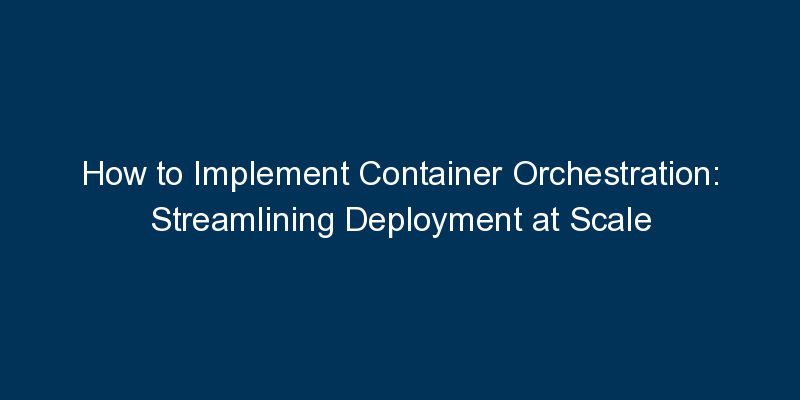Container orchestration has become essential for managing and scaling containerized applications effectively. This blog provides a step-by-step guide on how to implement container orchestration, empowering organizations to streamline deployment, ensure scalability, and enhance the reliability of containerized environments.
Introduction:
As the use of containers grows, orchestrating and managing them at scale becomes a critical challenge. Container orchestration platforms like Kubernetes have emerged to address this challenge by automating deployment, scaling, and management tasks. This guide explores the key steps to implement container orchestration successfully.
Key Steps to Implement Container Orchestration:
- Selecting Container Orchestration Platform: Choose a container orchestration platform that suits your organization’s needs. Kubernetes is a popular choice, offering robust features for container management, scaling, and automated operations.
- Infrastructure Preparation: Ensure your infrastructure is prepared for container orchestration. This involves setting up nodes (servers) where containers will run, configuring networking, and ensuring connectivity between nodes.
- Containerizing Applications: Containerize your applications using technologies like Docker. This involves creating Docker images for your applications and defining the necessary configurations.
- Installation of Container Orchestration Platform: Install and configure the chosen container orchestration platform. Follow the platform-specific instructions for deploying the orchestration system, such as setting up a Kubernetes cluster.
- Deployment Definitions (YAML Files): Define deployment configurations for your applications using YAML files. These files describe how the orchestration platform should run and manage containers, including details like replicas, networking, and resource requirements.
- Scaling and Load Balancing: Utilize container orchestration features for scaling applications horizontally. Set up load balancing to distribute traffic efficiently across multiple container instances.
Conclusion:
Implementing container orchestration is a crucial step for organizations embracing containerized environments. By following the steps outlined in this guide, businesses can leverage container orchestration platforms to automate deployment processes, ensure scalability, and enhance the overall efficiency of containerized applications.






















Comments